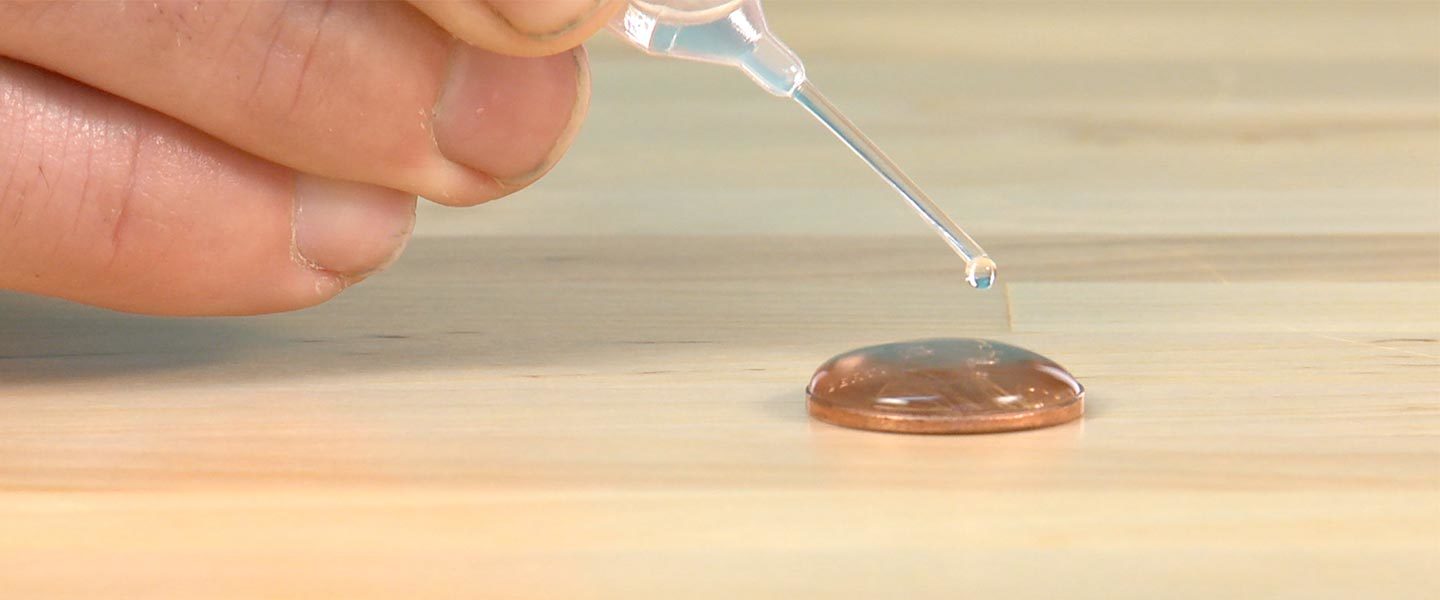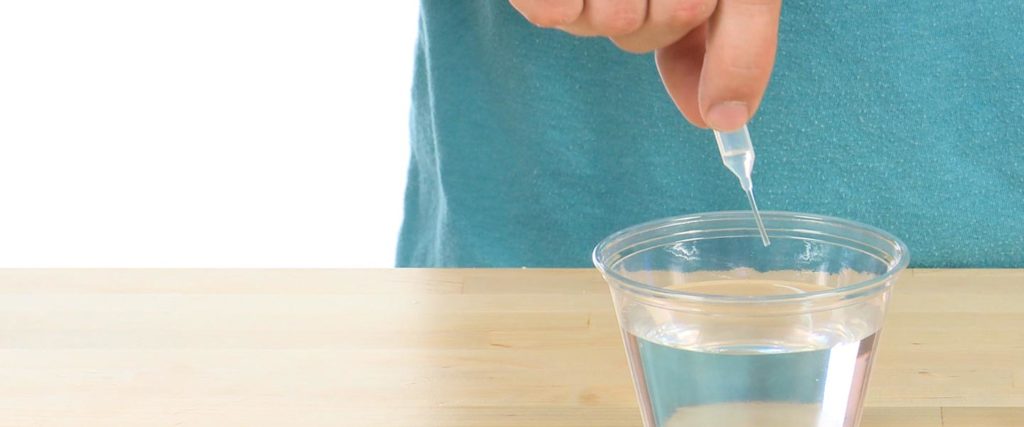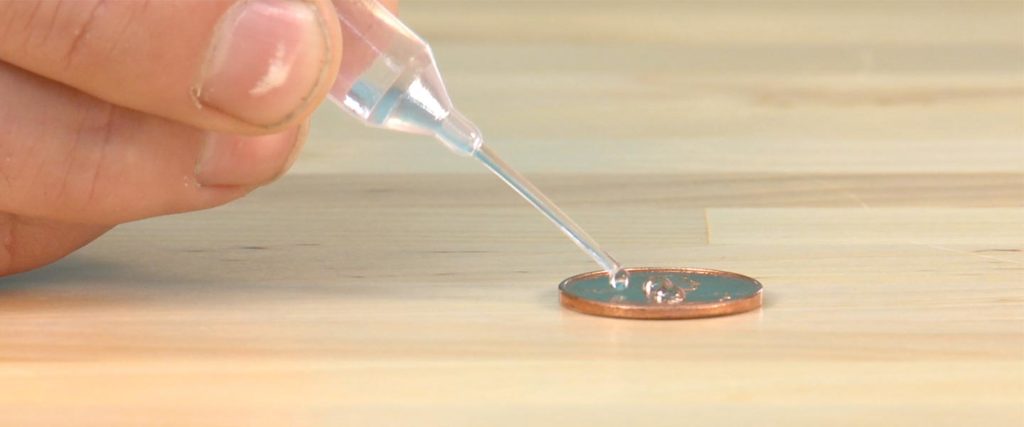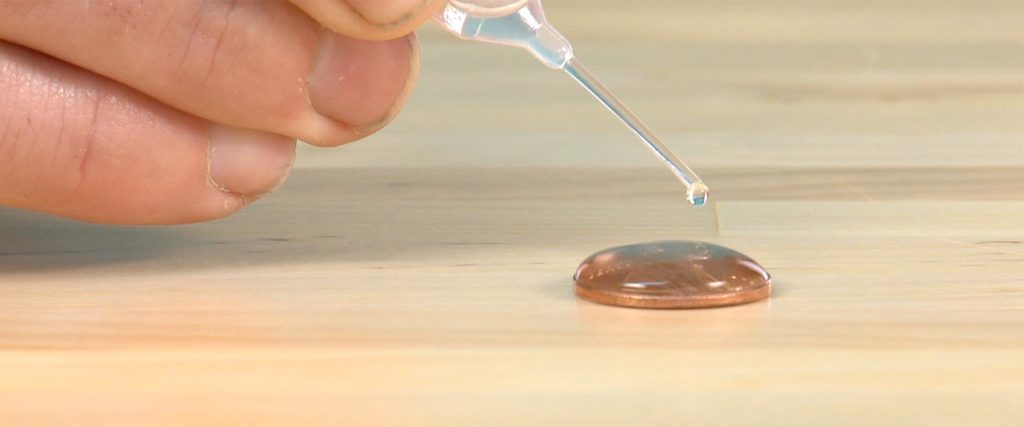Mysterious Water Suspension
At first glance, you might think that you’ve seen this science demonstration attempted by a friend. A glass jar is filled with water and covered […]

You might think that you can’t fit many drops of water on the surface of a penny. Pennies are just so small! In the Drops on a Penny experiment, though, you’ll experience surface tension and cohesion at their finest. How many drops of water can you fit? There’s only one way to find out… by adding one drop at a time!
Wash and rinse a penny in tap water. Dry it completely with a paper towel.
Place the penny on a flat surface. The flatter the surface, the better this experiment is going to go.

Use an eyedropper or pipette to draw up water.

Carefully, drop individual drops of water onto the flat surface of the penny.

Keep track of the water drops as you add them, one at a time, until water runs over the edge of the penny. You’ll probably be surprised by the number of drops you get on there!
There are two properties at work in this experiment: cohesion and surface tension. Cohesion is the attraction of like molecules to one another. In this case, the like molecules are the H20 molecules in the water drops. Surface tension is a special term we use to describe the cohesion between water molecules.
Water’s cohesion and surface tension are special because of hydrogen bonds. Hydrogen bonds are formed by the hydrogen atoms of one molecule being attracted to the oxygen atoms of another molecule.
The cohesion and surface tension of water becomes apparent when the drops of water you add to the penny reach the penny’s edge. Once the water has reached the edge, you begin to see a bubble or dome of water forming on top of the penny. The bubble shape is a result of the water molecules clinging to one another in an optimal shape (just like the bonds on the surface of a blown bubble).
Extend this experiment by trying different coins such as dimes, nickels, or quarters.
Demonstrating the cohesive properties of water is pretty cool, but it isn’t a science fair project. You can create a science fair project by identifying a variable, or something that changes, in this experiment. Let’s take a look at some of the variable options that might work:
That’s just a couple of ideas, but you aren’t limited to those! Try coming up with different ideas of variables and give them a try. Remember, you can only change one thing at a time. If you are testing different liquids, make sure that the other factors are remaining the same.